
My links: linktr.ee/Metanagon
Art trade for @4llhailstarscream.bsky.social
Guided by its star, the blue jay takes flight and follows its scarlet glow through the darkness. Talons reaching toward its dreams, it clings with all its strength to the passion burning within its core.
#art #nature #furryart #furry #bird

A huge thank-you to the two organizers. I’ll soon make a recap reel to look back on this wonderful journey!

A huge thank-you to the two organizers. I’ll soon make a recap reel to look back on this wonderful journey!
🐴 Przewalski’s Horse
An ancestral wild horse from Mongolia. It stands about 1.30 m at the withers and has a bay dun coat.
🦠 Diskagma (~2.2 billion years)
The oldest fossil on Earth. Discovered in South Africa, it is a eukaryote at the origins of life!
#SciArt #Paleoart
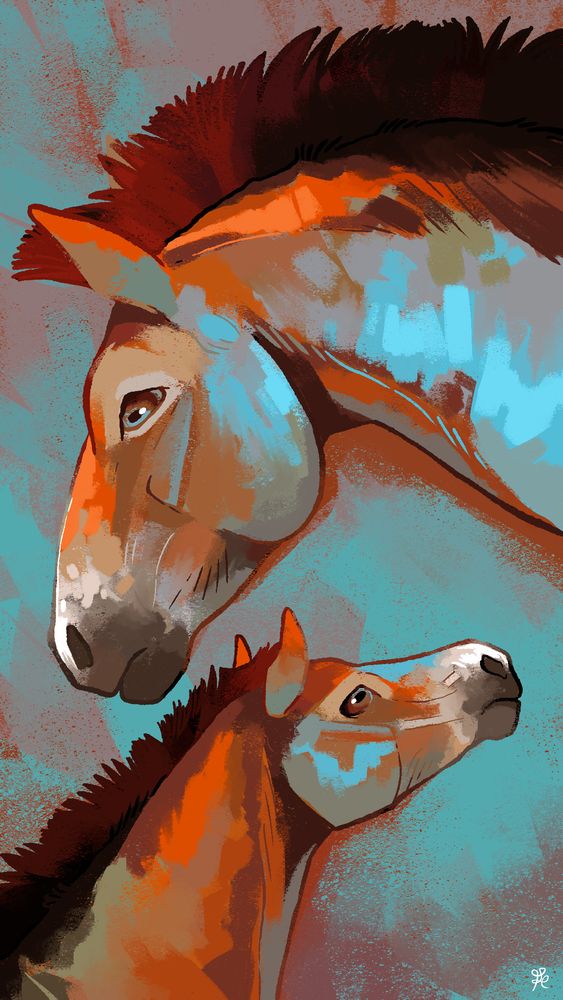

🐴 Przewalski’s Horse
An ancestral wild horse from Mongolia. It stands about 1.30 m at the withers and has a bay dun coat.
🦠 Diskagma (~2.2 billion years)
The oldest fossil on Earth. Discovered in South Africa, it is a eukaryote at the origins of life!
#SciArt #Paleoart
🦕 Miragaia (~150 Ma)
Discovered in Portugal, this herbivorous dinosaur lived during the Late Jurassic. Its name means “Goddess of the Earth.”
🐧 Great Auk (19th century)
Hunted for its meat, the species went extinct. It lived in the North Atlantic.
#SciArt #Paleoart #art
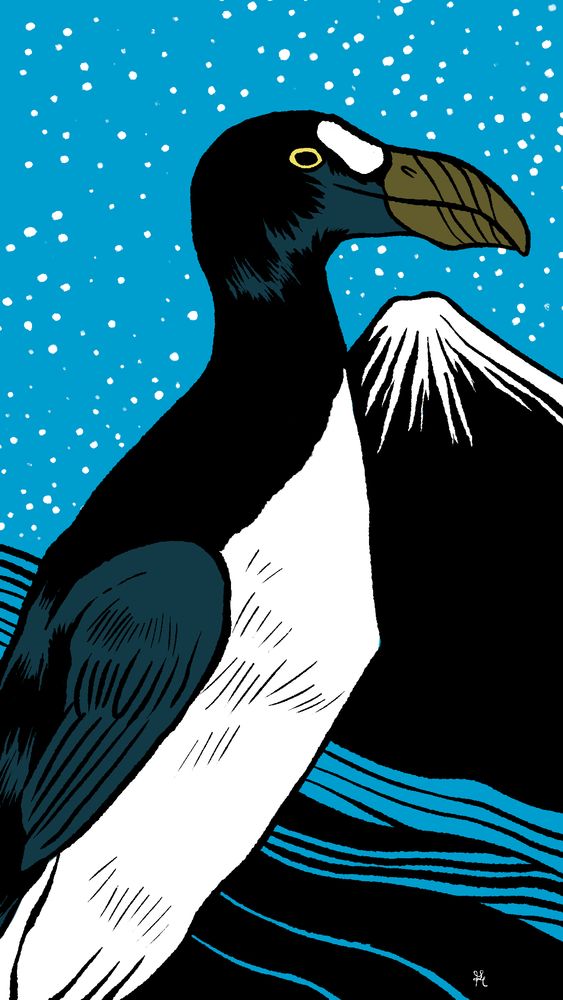

🦕 Miragaia (~150 Ma)
Discovered in Portugal, this herbivorous dinosaur lived during the Late Jurassic. Its name means “Goddess of the Earth.”
🐧 Great Auk (19th century)
Hunted for its meat, the species went extinct. It lived in the North Atlantic.
#SciArt #Paleoart #art
🐆 Miracinonyx (~12,000 years ago)
An American cheetah, resembling its modern counterpart.
🐌 Bellerophon (~430 Ma)
A close relative of modern mollusks. The external surface is smooth, ornamented only by growth lines.
#Paleoart #SciArt #nature #artist

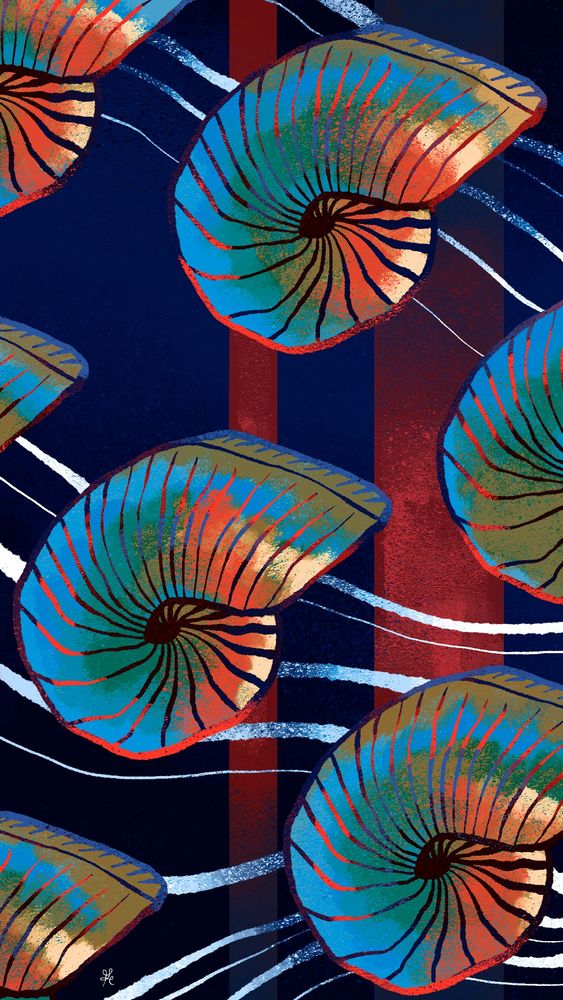
🐆 Miracinonyx (~12,000 years ago)
An American cheetah, resembling its modern counterpart.
🐌 Bellerophon (~430 Ma)
A close relative of modern mollusks. The external surface is smooth, ornamented only by growth lines.
#Paleoart #SciArt #nature #artist
🐍 Wonambi (~2 Ma)
An Australian snake of the Pleistocene. Mapping the species revealed it corresponds to the sacred Wagyl sites: the protector of Nature!
🦜 Agapornis longipes (~2.5 Ma)
A lovebird that lived in Africa. It fed on the ground.
#Paleoart #SciArt #art


🐍 Wonambi (~2 Ma)
An Australian snake of the Pleistocene. Mapping the species revealed it corresponds to the sacred Wagyl sites: the protector of Nature!
🦜 Agapornis longipes (~2.5 Ma)
A lovebird that lived in Africa. It fed on the ground.
#Paleoart #SciArt #art
🐬 Hemisintrachelus (~25 Ma)
A whale-dolphin from the Late Oligocene.
🌀 Cyrtograptus grayianus (~440 Ma)
A marine worm-like organism related to echinoderms. It was discovered by Elizabeth Gray, a pioneering woman in paleontology.
#Paleoart #SciArt #art

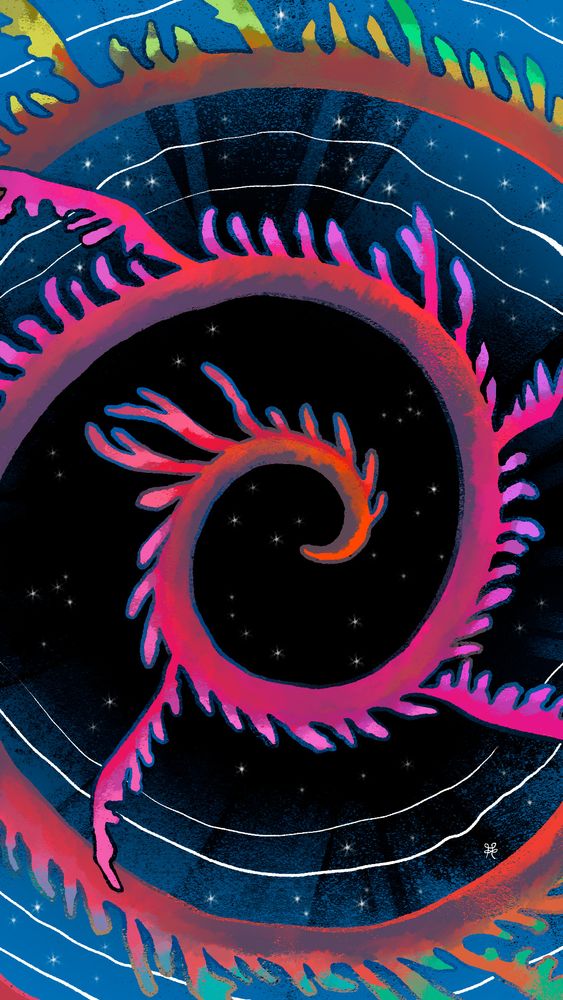
🐬 Hemisintrachelus (~25 Ma)
A whale-dolphin from the Late Oligocene.
🌀 Cyrtograptus grayianus (~440 Ma)
A marine worm-like organism related to echinoderms. It was discovered by Elizabeth Gray, a pioneering woman in paleontology.
#Paleoart #SciArt #art
🐣 Kelenken (~15 Ma)
A gigantic flightless carnivorous bird. It stood about 3 meters tall and had a skull 70 cm long.
🐊 Sphenacodon (~300 Ma)
A close relative of Dimetrodon, it lived during the Early Permian.
#SciArt #Paleoart #art #reptile

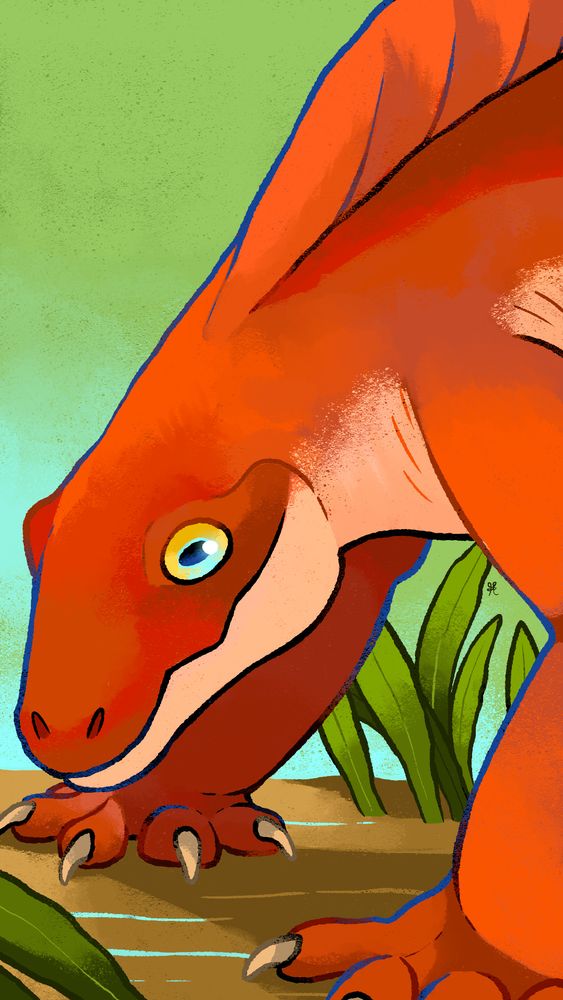
🐣 Kelenken (~15 Ma)
A gigantic flightless carnivorous bird. It stood about 3 meters tall and had a skull 70 cm long.
🐊 Sphenacodon (~300 Ma)
A close relative of Dimetrodon, it lived during the Early Permian.
#SciArt #Paleoart #art #reptile
🦈 Xiphiorhynchus (~26 Ma)
A prehistoric swordfish that lived from the Eocene to the Oligocene. Both of its jaws were elongated into sharp, pointed rostra.
🦐 Cambropachycope (~500 Ma)
An enigmatic arthropod with a large compound eye.
#SciArt #Paleoart #fish #art


🦈 Xiphiorhynchus (~26 Ma)
A prehistoric swordfish that lived from the Eocene to the Oligocene. Both of its jaws were elongated into sharp, pointed rostra.
🦐 Cambropachycope (~500 Ma)
An enigmatic arthropod with a large compound eye.
#SciArt #Paleoart #fish #art
🦛 Andrewsarchus (~45 Ma)
Andrewsarchus was the largest terrestrial carnivorous mammal to have ever existed.
🦎 Varanus sivalensis (~5 Ma)
It belonged to a lineage that produced some of the largest land reptiles in history.
#SciArt #Paleoart #art #reptile
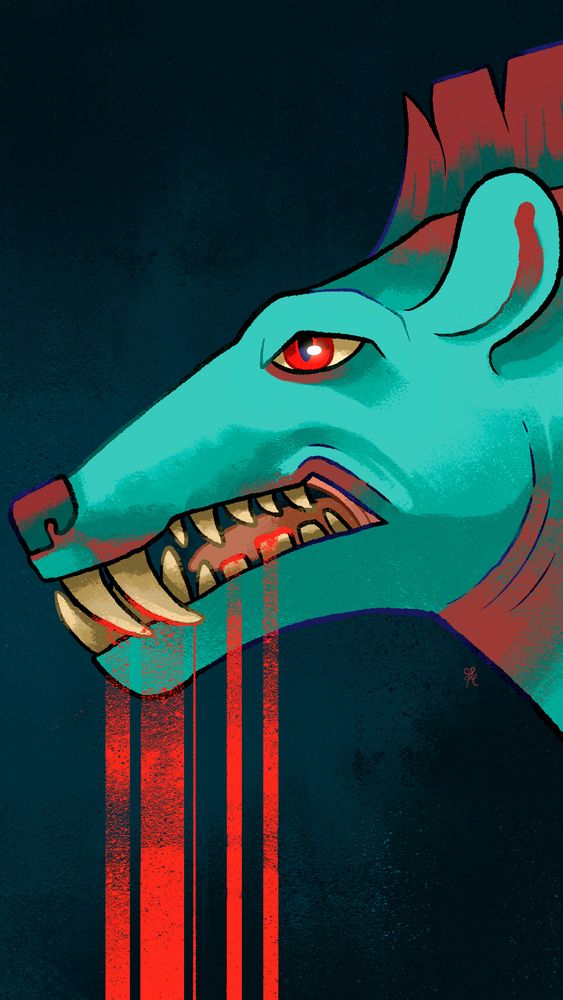

🦛 Andrewsarchus (~45 Ma)
Andrewsarchus was the largest terrestrial carnivorous mammal to have ever existed.
🦎 Varanus sivalensis (~5 Ma)
It belonged to a lineage that produced some of the largest land reptiles in history.
#SciArt #Paleoart #art #reptile
🐜 Titanomyrma (~49 Ma)
The most recently discovered species is a fossilized winged queen comparable in size to a hummingbird.
🐞 Oryctoantiquus (~45 Ma)
A beetle from the middle Eocene. It is known for being the largest scarab beetle discovered so far.
#SciArt #Paleoart


🐜 Titanomyrma (~49 Ma)
The most recently discovered species is a fossilized winged queen comparable in size to a hummingbird.
🐞 Oryctoantiquus (~45 Ma)
A beetle from the middle Eocene. It is known for being the largest scarab beetle discovered so far.
#SciArt #Paleoart
🦖 Spinosaurus (~80 Ma)
The largest terrestrial predator. Semi-aquatic, it lived near rivers and fed on fish.
🐶 Epicyon (~10 Ma)
A member of the canid family, it lived in North America from the Lower Miocene to the early Pliocene.
#Paleoart #SciArt #art #dinosaur


🦖 Spinosaurus (~80 Ma)
The largest terrestrial predator. Semi-aquatic, it lived near rivers and fed on fish.
🐶 Epicyon (~10 Ma)
A member of the canid family, it lived in North America from the Lower Miocene to the early Pliocene.
#Paleoart #SciArt #art #dinosaur
🐔 Patagopteryx (~85 Ma)
About the size of a chicken, it’s the earliest known example of a bird that couldn’t fly.
🦂 Eramoscorpius (~443 Ma)
A scorpion resembling its modern relatives: it lived in water but could also move on land.
#Paleoart #SciArt #art


🐔 Patagopteryx (~85 Ma)
About the size of a chicken, it’s the earliest known example of a bird that couldn’t fly.
🦂 Eramoscorpius (~443 Ma)
A scorpion resembling its modern relatives: it lived in water but could also move on land.
#Paleoart #SciArt #art
🦕 Einiosaurus (~74 Ma)
A ceratopsian from the Late Cretaceous that lived in the northwest of North America.
🐬 Rhomaleosaurus (~200 Ma)
A member of the pliosaur family, this marine predator hunted bony fish and wasn’t afraid to attack sharks.
#SciArt #Paleoart #art


🦕 Einiosaurus (~74 Ma)
A ceratopsian from the Late Cretaceous that lived in the northwest of North America.
🐬 Rhomaleosaurus (~200 Ma)
A member of the pliosaur family, this marine predator hunted bony fish and wasn’t afraid to attack sharks.
#SciArt #Paleoart #art
🪶 Thalassodromeus (~110 Ma)
Un grand ptérosaure du Crétacé découvert au Brésil.
🌿 Asterophyllites (~310 Ma)
Une plante fossile du Carbonifère, proche des prêles actuelles.
#art #paleoart #dinosaur #pterosaur #surrealism #sciart


🪶 Thalassodromeus (~110 Ma)
Un grand ptérosaure du Crétacé découvert au Brésil.
🌿 Asterophyllites (~310 Ma)
Une plante fossile du Carbonifère, proche des prêles actuelles.
#art #paleoart #dinosaur #pterosaur #surrealism #sciart
🦔 Wuerhosaurus (~130 Ma)
Un dinosaure à plaques du Crétacé inférieur, apparenté au célèbre Stegosaurus.
🐊 Sebecus (~40 Ma)
Un crocodilien terrestre d’Amérique du Sud, au museau étroit et aux dents tranchantes.
#Paleoart #Reptile #Sciart


🦔 Wuerhosaurus (~130 Ma)
Un dinosaure à plaques du Crétacé inférieur, apparenté au célèbre Stegosaurus.
🐊 Sebecus (~40 Ma)
Un crocodilien terrestre d’Amérique du Sud, au museau étroit et aux dents tranchantes.
#Paleoart #Reptile #Sciart
🦕 Camarasaurus (~150 Ma)
Un grand dinosaure sauropode du Jurassique, au long cou et à la tête arrondie.
🍄 Archaeomarasmius (~90 Ma)
Un champignon fossile du Crétacé découvert dans l’ambre du New Jersey.
#paleoart #artist #dinosaur #surrealism

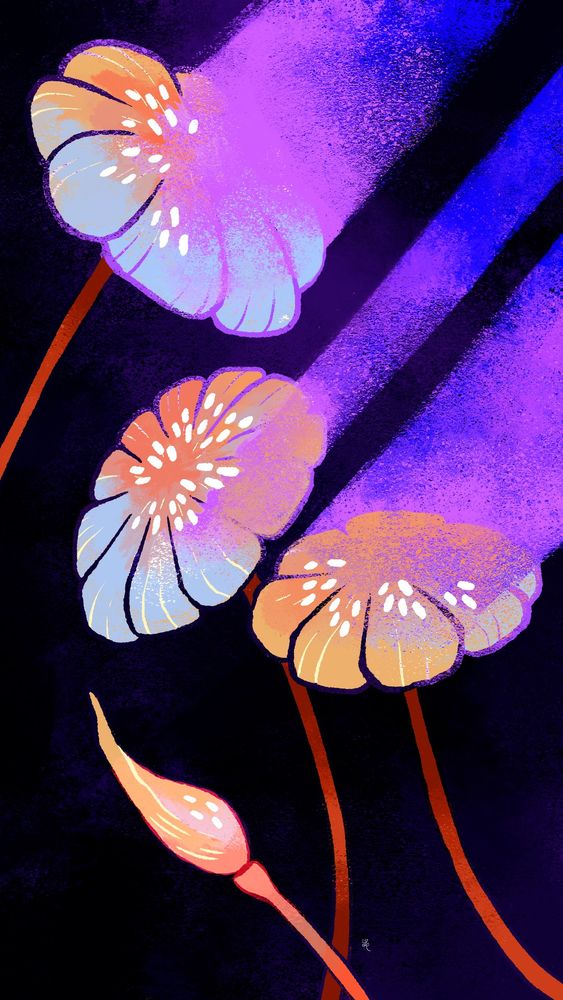
🦕 Camarasaurus (~150 Ma)
Un grand dinosaure sauropode du Jurassique, au long cou et à la tête arrondie.
🍄 Archaeomarasmius (~90 Ma)
Un champignon fossile du Crétacé découvert dans l’ambre du New Jersey.
#paleoart #artist #dinosaur #surrealism
🐬 Platypterygius (~100 Ma)
Un ichtyosaure du Crétacé, un reptile marin rappelant les dauphins modernes.
🐇 Cainotherium (~25 Ma)
Un petit mammifère d’Europe, vivant au Miocène.
#paleoart #stylized #sciart #surrealism


🐬 Platypterygius (~100 Ma)
Un ichtyosaure du Crétacé, un reptile marin rappelant les dauphins modernes.
🐇 Cainotherium (~25 Ma)
Un petit mammifère d’Europe, vivant au Miocène.
#paleoart #stylized #sciart #surrealism
🦅 Venetoraptor (~230 Ma)
Un petit prédateur du Trias découvert au Brésil. Avec son bec crochu et ses longues griffes, il attrapait probablement des proies rapides ou grimpait aux arbres
#artist #paleoart #science #dinosaur

🦅 Venetoraptor (~230 Ma)
Un petit prédateur du Trias découvert au Brésil. Avec son bec crochu et ses longues griffes, il attrapait probablement des proies rapides ou grimpait aux arbres
#artist #paleoart #science #dinosaur
🦛 Kannemeyeria (~245 Ma)
Un grand herbivore du Trias, proche des mammifères par certains traits.
🐟 Allenypterus (~318 Ma)
Un poisson à nageoires lobées du Carbonifère, cousin des célèbres cœlacanthes.
#art #paleoart #science

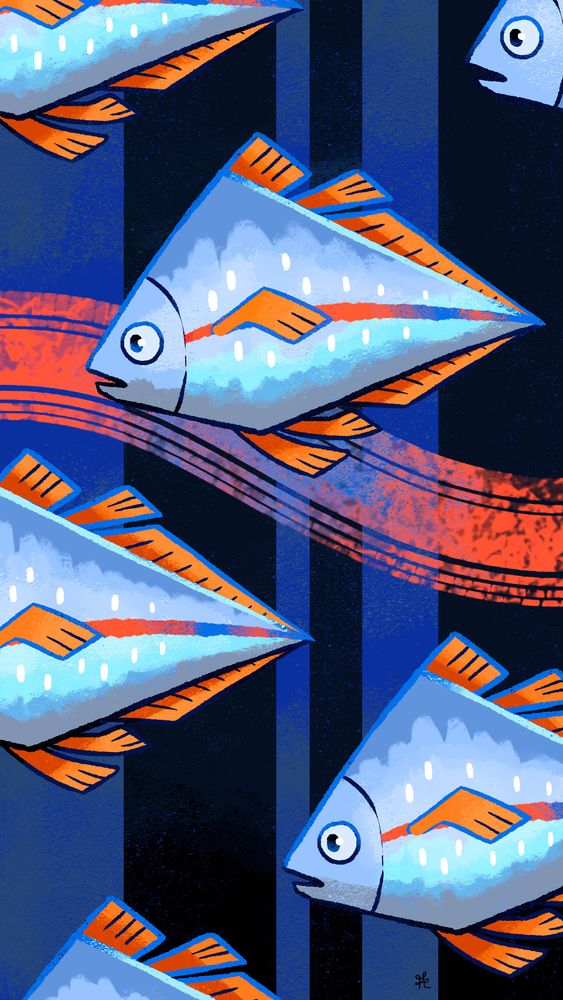
🦛 Kannemeyeria (~245 Ma)
Un grand herbivore du Trias, proche des mammifères par certains traits.
🐟 Allenypterus (~318 Ma)
Un poisson à nageoires lobées du Carbonifère, cousin des célèbres cœlacanthes.
#art #paleoart #science
🐢 Psephoderma (~210 Ma)
Un reptile marin du Trias, au corps plat et à la carapace épaisse rappelant celle d’une tortue.
🪲 Eoproscopia (~50 Ma)
Un insecte du début de l’Éocène, proche des mantes religieuses.
#paleoart #reptile #science


🐢 Psephoderma (~210 Ma)
Un reptile marin du Trias, au corps plat et à la carapace épaisse rappelant celle d’une tortue.
🪲 Eoproscopia (~50 Ma)
Un insecte du début de l’Éocène, proche des mantes religieuses.
#paleoart #reptile #science





